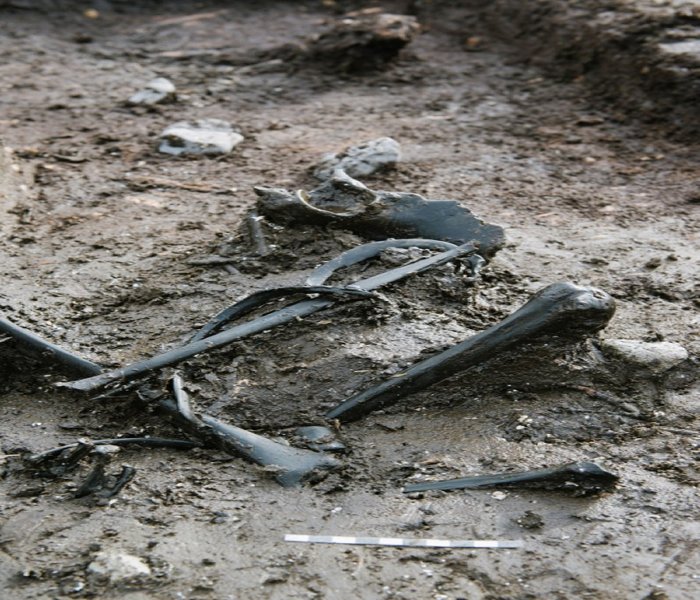Near Skdstrup, north of Aarhus, Moesgaard Museum archaeologists made an unusually complete and well-preserved Iron Age find.
One person and eight dog carcasses were discovered near to tethering poles in one of the bogs that contained sacrifices, according to Online Post.
According to Moesgaard Museum archaeologist Per Mandrup, “we had enormous expectations for the excavations because tombs and other sacrificial remnants had been unearthed in the region.”

A well-preserved human skeleton was also found in the bog (photo: Moesgaard Museum)
But the new discovery has beyond all expectations, and finding a human skeleton is the cherry on top. The discovery puts us closer to the sacrifice practices of the later Iron Age because the skeleton is that of a young woman in her 20s.
The archaeologists are currently excavating a settlement that features a well-preserved paved road and house floors in addition to the sacrificial victims.

One of the dog remains found in the bog near Skødstrup (photo: Moesgaard Museum)
During the early Iron Age, bogs were used for peat digging and several centuries later a practice emerged in which humans and animals were killed and laid into the old peat pits as sacrifices to the gods.
In another bog east of the area, unique archaeological discoveries have been unearthed since the 1800s, including swords, lances, parts of shields, human skeletons, a phallus and 13 dog remains.
“In Skødstrup we have the entire palette of an Iron Age society: a well-structured village with accompanying burial area and sacrificial bogs. It give us a unique, collective insight into life during the Iron Age,” said Mandrup.
The discovery was made in connection with some extensive land development undertaken by Aarhus Municipality.
AncientPages.com







